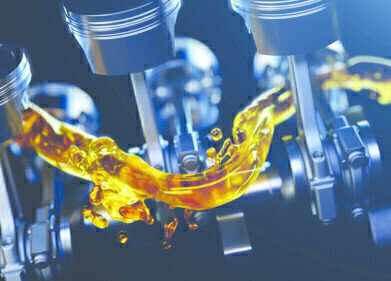Biodiesel
Which Instruments & Techniques Are Used for Fuel, Petrochemical & Oil Analysis?
May 07 2022
From determining suitability for refineries to assessing environmental damage after a spill, analytical instruments and techniques are used for a wide variety of oil analysis applications. While crude oil is mainly composed of hydrocarbons - around 13% hydrogen and 85% carbon – it also contains traces of elements such as sulphur, nitrogen, oxygen and metals.
These elements are present in small concentrations but can have a big impact on the physical and chemical composition of oil. Oil analysis plays a pivotal role in helping scientists unpack the unique characteristics of samples. Data is used to inform and educate decision-makers, whether it’s a project manager at a drilling site or a spill response technician.
Mapping crude oil chemistry
The molecular structure of crude oil hydrocarbons depends on the origins of the organic matter. For example, hydrocarbons derived from plant matter may have a different structure to those derived from plankton. The intensity of heat and pressure applied to organic matter during the hydrocarbon forming process can also impact the characteristics of crude oil.
Formation takes place over millions of years, so it makes sense there are significant variations between hydrocarbon structures. For example, some of the lightest oils on the market have hydrocarbon concentrations as high as 97%. In comparison, heavier oils may contain just 50% hydrocarbons and higher concentrations of other elements such as metals, sulphur and nitrogen.
It’s not unusual for a single sample of crude oil to contain hundreds of different compounds. With so much variety between different oils, analysis is fundamental. As a result, analytical instruments and techniques are the backbone of the oil industry. Below, we take a closer look at some of the methods used for oil analysis.
Gas Chromatography
Gas Chromatography (GC) is one of the most valuable tools available to oil analysts. In the petroleum industry, the technique is used to analyse crude oil as well as refined products, petrochemicals, natural gas and LPG. Highly specialised instruments called gas chromatographs are used to carry out GC analysis and unlock valuable data about the characteristics of oil.
Gas chromatographs are equipped with detectors that interact with gaseous solutes as they’re released from the main column. The detector uses these reactions to create an electronic signal. This electronic signal is then sent to the data system, which creates a chromatogram. Patterns in the chromatogram reveal the different components within the sample.
GC detectors vary depending on the instrument. Flame Ionisation Detectors (FID) are widely used in GC as they’re capable of detecting compounds containing carbon atoms. Other options include Catalytic Combustion Detector (CCD), Flame Photometric Detectors (FPD), Discharge Ionisation Detectors (DID), Helium Ionisation Detectors (HID) and Electron Capture Detectors (ECD).
Some examples of applications for Gas Chromatography include:
- Detecting concentrations of chemical elements to parts per million (ppm), parts per billion (ppb) and parts per thousand (ppt)
- Carrying out compositional analysis
- Establishing the purity of samples
- Detecting contaminants in samples
- Identifying and quantifying different components within a sample
ASTM International offers multiple Gas Chromatography test methods designed to make the process as easy and reliable as possible. These include the ASTM D1945-14(2019) Standard Test Method for Analysis of Natural Gas by Gas Chromatography. The ASTM D2360 Standard Test Method for Trace Impurities in Monocyclic Aromatic Hydrocarbons by Gas Chromatography is another popular technique and “covers the determination of the total nonaromatic hydrocarbons, and trace monocyclic aromatic hydrocarbons in the purity of toluene and mixed xylenes by gas chromatography.”
Comprehensive Two-Dimensional Gas Chromatography
Comprehensive Two-Dimensional Gas Chromatography (GCxGC) is rapidly establishing itself as a gold-standard technique for oil analysis. The powerful, ultra-sensitive technique uses a pair of columns with different phase selectivity. Agilent Technologies is a pioneer of GCxGC technology and predicts the method will “set a new standard for petrochemical compositional analysis”.
Time of Flight Mass Spectrometry
Time of Flight Mass Spectrometry (TOF) is based on the principle that mass affects the speed at which ions travel. The technique uses an electric field to accelerate ions and establish a base level of kinetic energy. Once all ions have the same charge, a time of flight measurement analyser is used to measure velocity and track how long it takes each ion to travel to the detector. This is known as a time of flight measurement and is used to establish the mass-to-charge ratio and identify individual ions.
Near Infrared Analysis
Near Infrared (NIR) Analysis is a useful technique for mapping the hydrocarbon composition of oil. The method is particularly useful at refineries, where sampling interfaces are used to generate real-time data throughout the oil refining process. This includes monitoring parameters of interest like benzene and butane content, as well as Research Octane Rating.
Many refineries use NIR spectrometers to monitor reformate during the fuel blending process. The gasoline blending stock is produced during the catalytic cracking process and is a component of finished gasoline. As the process takes place, NIR Analysis is used to monitor levels of paraffins, isoparaffins, olefins, napthenes and aromatics (PIONA) in the reformate.
At biodiesel refineries, NIR spectrometers are used to calculate the iodine value (IV) of feedstocks. The instruments allow analysts to track concentrations of unsaturated fatty acids, with data used to predict the drying capacity and oxidation properties of the finished biodiesel product.
Thermal Analysis
Thermal analysis techniques are used to characterise petroleum products and create a detailed “fingerprint” of their chemical and physical properties. The techniques are used to analyse a variety of different materials, including raw crude oil, refined gasoline and diesel, liquid petroleum gas, distillates, lubricants, coal, polymers and other products.
Differential Scanning Calorimetry (DSC) is one of the most useful techniques available to analysts, with highly specialised instruments used to measure heat flow rates as a sample is exposed to a constant temperature. The technique is rapid, reliable and offers excellent insight into the chemical and physical properties of petroleum and other hydrocarbon-derived products.
Thermal Gravimetric Analysis (TGA) is another popular technique used to calculate the thermal stability of a sample. Thermogravimetric analysers are used to record weight changes that take place when a sample is exposed to high temperatures.
In the automotive and mechanical industries, thermal analysis techniques are especially useful. Lubricating oils are the lifeblood of car engines and heavy-duty machinery, which makes quality and performance a top priority for operators. Thermal methodology is used to monitor the evaporation of important volatile components found in lubricating oils and detect increases in viscosity. Temperature-based techniques such as TGA and DSCD are also used to monitor soot concentrations in lubricating oils and gain valuable insight into the health of engines.
Two-Dimensional Liquid Chromatography
Two-Dimensional Liquid Chromatography (2D-LC) is one of the latest techniques to shake up the oil analysis sector. Used for both petroleum and petrochemical research, the method relies on sophisticated instruments and software. After being injected into the 2D-LC system the oil sample passes through dual liquid phase separation stages. This multidimensional approach allows scientists to analyse and characterise complex petroleum samples, including bio oils and asphalt fractions. 2D-LC is also sensitive enough to detect individual metals in petroleum residues.
2D-LC techniques will take centre stage at the upcoming PEFTEC conference, with Dr Matthias Pursch set to discus the topic in more detail in his seminar, ‘Review of two-dimensional liquid chromatography for advanced structure analysis in petrochemical research.’ Hosted in Rotterdam, the industry event brings together the brightest minds in the petroleum, petrochemical, chemical and refining industries. Industry leaders will descend on the Dutch port city for two days of keynote lectures, seminars, presentations and panel discussions. Events will cover multiple themes, including applications, regulation, policy and compliance, industrial case studies and new and emerging technologies.
Oil analysis for environmental research
Oil analysis techniques aren’t just used within the petroleum and petrochemicals industry. In the book Water Analysis | Oil Pollution, author M. Fingas spotlights the use of Gas Chromatography for environmental applications. Around the world, environmental laboratories rely on GC to carry out specialised chemical analysis on oil spill samples.
“The characterisation of oil in an environmental sample can be important for the assessment of environmental damage, and also in the selection of appropriate response and clean-up measures,” writes Fingas. “The identification of an oil spill source is also important for settling liability and compensation issues. Petroleum hydrocarbon analysis may also be required to determine the concentrations around a source, for example, an oil platform, or pipeline.”
Predicting oil weathering patterns
As well as assessing initial damage, GC data is used to predict what physical and chemical changes the oil will undergo once it has infiltrated the natural environment. This process is called weathering and is driven by factors such as emulsification, evaporation, dissolution, dispersion, oxidation and microbial degradation. Oil analysis helps environmental scientists predict how the oil will behave and develop robust management strategies.
Of all the parameters tested in oil analysis, lubricity is one of the most important. Find out more about the next-generation methods used to monitor this characteristic from Koehler Instrument Company experts Dr. Raj Shah and Alexandra Przyborowski ‘Recent advances in testing the lubricity of diesel fuels.'
Digital Edition
PIN 26.1 Feb/Mar 2025
March 2025
Analytical Instrumentation - Elemental Analysis for Quality and Process Control at Refineries, for Lubricants and Wear Metals in Engine Oils - Synthetic Lubricants: New Developments - Scaling...
View all digital editions
Events
Apr 22 2025 Hammamet, Tunisia
Apr 22 2025 Kintex, South Korea
Solar & Energy Storage Summit 2025
Apr 23 2025 Denver, CO, USA
Apr 27 2025 Portland, OR, USA
Apr 29 2025 Mumbai, India



















